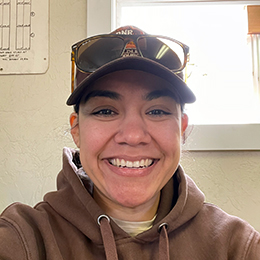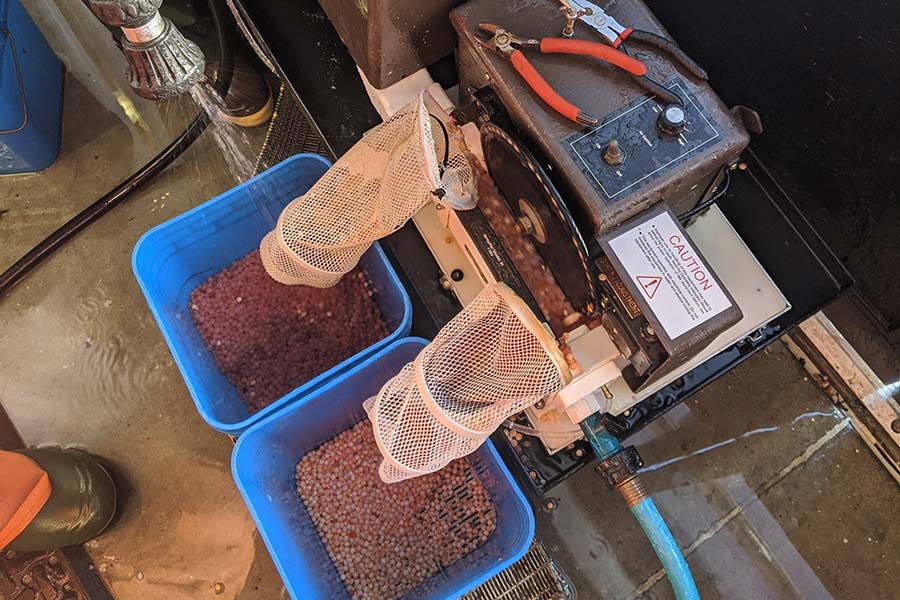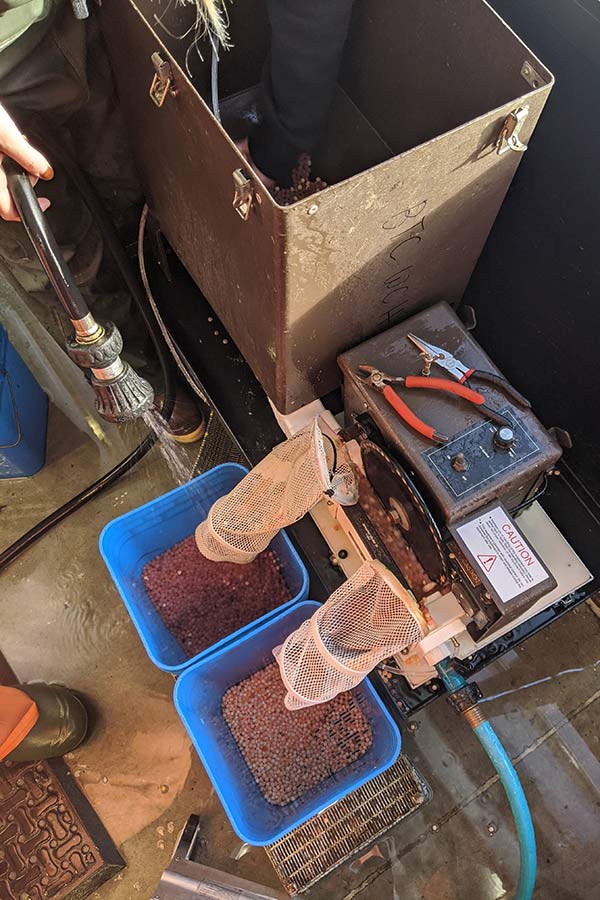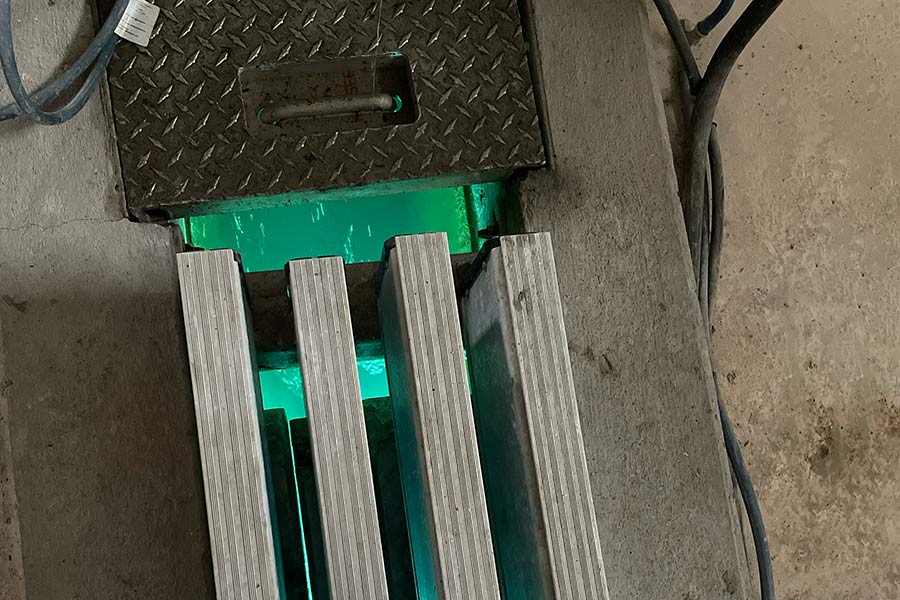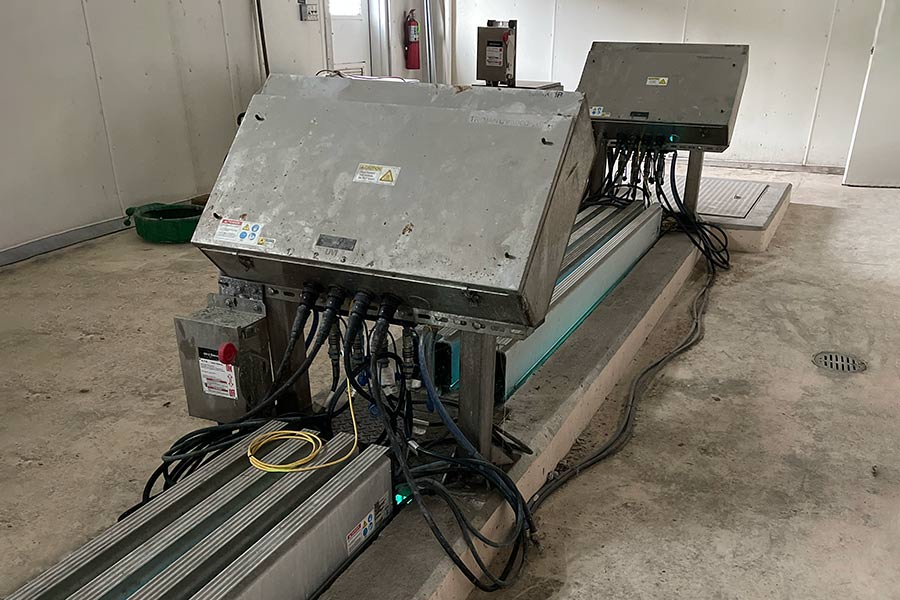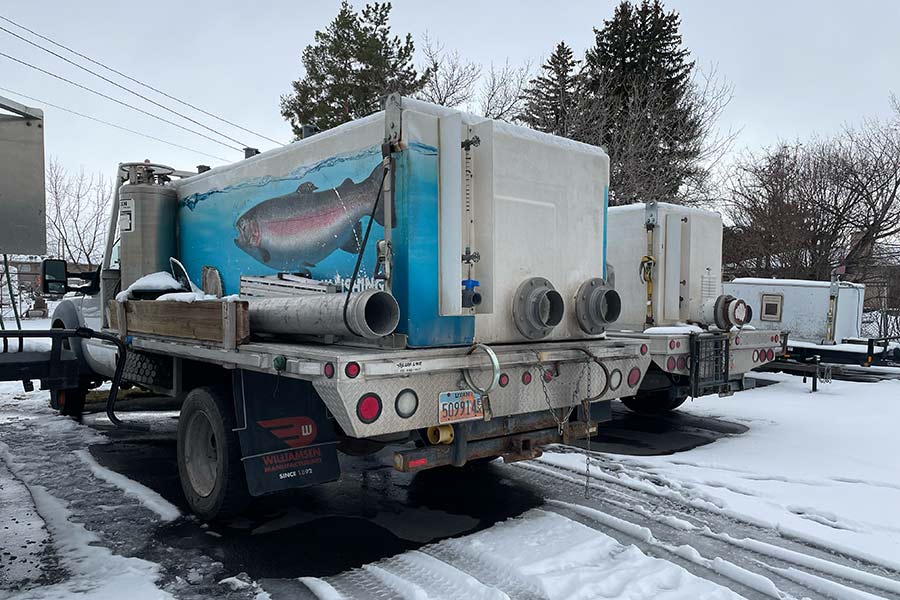What's the scoop on fish hatchery technology?
Three fascinating kinds of equipment used in fish culture
Valerie Gil
Wildlife Biologist, Fish Culture
DWR Springville Fish Hatchery
I first started my career in marketing, and it wasn't long before I realized that it just wasn't for me. So, I went back to school for a degree in fisheries biology. I worked with Pacific salmon in Washington and Alaska, and then in April of 2021, I moved to Utah to work with rainbow trout at the Springville Fish Hatchery.
What I love most about my job — and the main thing that got me interested in this field — is that I get to be outside and work with fish. I truly enjoy what I do and can't see myself doing anything else. Our hatchery team is awesome, which makes going to work fun. And, we're always working to improve hatchery outcomes and keep Utah's fish populations healthy.
One of the most interesting parts of our job is how much we use technologies and equipment unique to — or specifically adapted for — fish culture.
#1: Egg picker
The egg picker has got to be one of the most interesting pieces of equipment that I have ever worked with. Although I have not used an egg picker with trout (yet!), I did get to use this tech when I worked with Pacific salmon. Facilities in Utah that use pickers are our broodstock hatcheries, including Mantua, Egan and Mammoth Creek.
Egg pickers are necessary because not every egg taken during spawning will successfully fertilize and eventually hatch. The "bad" eggs can grow fungus and become harmful to the viable eggs if left intermingled at the hatchery.
The way that an egg picker works is quite simple: All that it requires is some light.
We start by placing the eggs in a tumbler at the top of the egg picker. In the tumbler, flowing water feeds the eggs into the picking device. Individual eggs slide onto a disk that has precisely-cut holes that are the exact size of the eggs so that one egg fits perfectly into each hole. The disk quickly rotates the eggs in a way that allows each egg to pass in front of a light: Light passes through healthy eggs, while bad eggs are opaque and won't let light through. A light sensor sorts the good and bad eggs into different chutes.
The machine we use at Mantua can pick 100,000 eggs per hour, and there are much faster ones used in hatchery work. As you can imagine, if a hatchery needs to screen millions of eggs for viability, this kind of device can save a lot of time and resources.
#2: Ultraviolet water filtration
At the Springville facility, we use a two-step filtration system to purify the water before it goes out into the raceways where the fish grow until they're big enough for stocking. We pull water from a nearby pond, and it's funneled into a treatment building where the water passes through a drum filter and an ultraviolet filter.
The drum filter screens out any debris that may have made its way into the treatment building, then the water flows through the UV filter. UV radiation is commonly used for industrial and medical settings — often for killing bacteria — and different UV wavelengths and intensities are used, depending on the intended purpose. In our hatchery, the UV filter consists of three banks (two of the three operate at any one time), and each bank has three sets of UV lights that kill any bacteria present. Through the combination of both the UV lights and the drum filter, the water that goes into the fish raceways is much cleaner than when it comes into the treatment building.
This filtration system prevents diseases and harmful bacteria from being transmitted to the growing fish. In addition, this ensures that the fish we grow — and the water they're transported in — won't spread harmful pathogens to Utah's waterbodies when the fish are eventually stocked.
#3: Fish transportation and stocking
Each hatchery is in charge of stocking fish in different predetermined waterbodies throughout the state each spring and fall. During those two seasons, each waterbody is allocated a certain amount of stockable fish (typically measured in pounds).
Rainbow trout from our hatchery go to some community ponds in Weber, Salt Lake and Utah counties, as well as a few reservoirs such as Deer Creek and Spanish Oaks. As far as the transportation side of it goes, our trucks have either one or two fish-transportation tanks; we have one of each kind of truck here at the Springville hatchery. Most tanks are about 500 gallons, and can hold up to 750 pounds of catchable fish. That translates to approximately 3,400 8-inch fish.
Fish need sufficient and continually-circulating oxygen to be safely transported to the various stocking locations. Before we put the fish in the tanks, we fill up the truck's oxygen tanks. There are also aerators inside the tanks themselves to help with water circulation and aid in the removal of carbon dioxide. We fill each tank with water based on the poundage of fish that we are going to stock. Once the fish have been funneled into the tanks, we turn on the oxygen and the aerators, and the fish are ready for transport and stocking. We use the same kind of equipment and processes for aerial stocking using airplanes, but the tanks and the fish are both smaller.
Fish hatchery technologies, equipment and best practices are constantly evolving. I have a lot of excitement about what the future holds in the field of fish culture.
